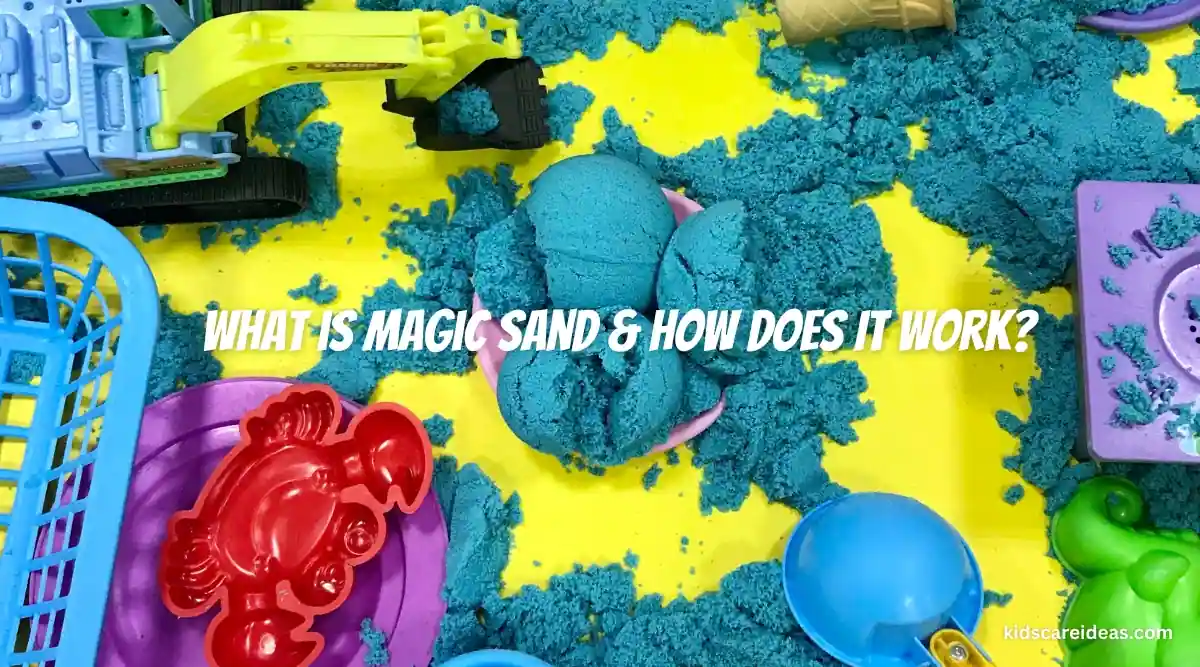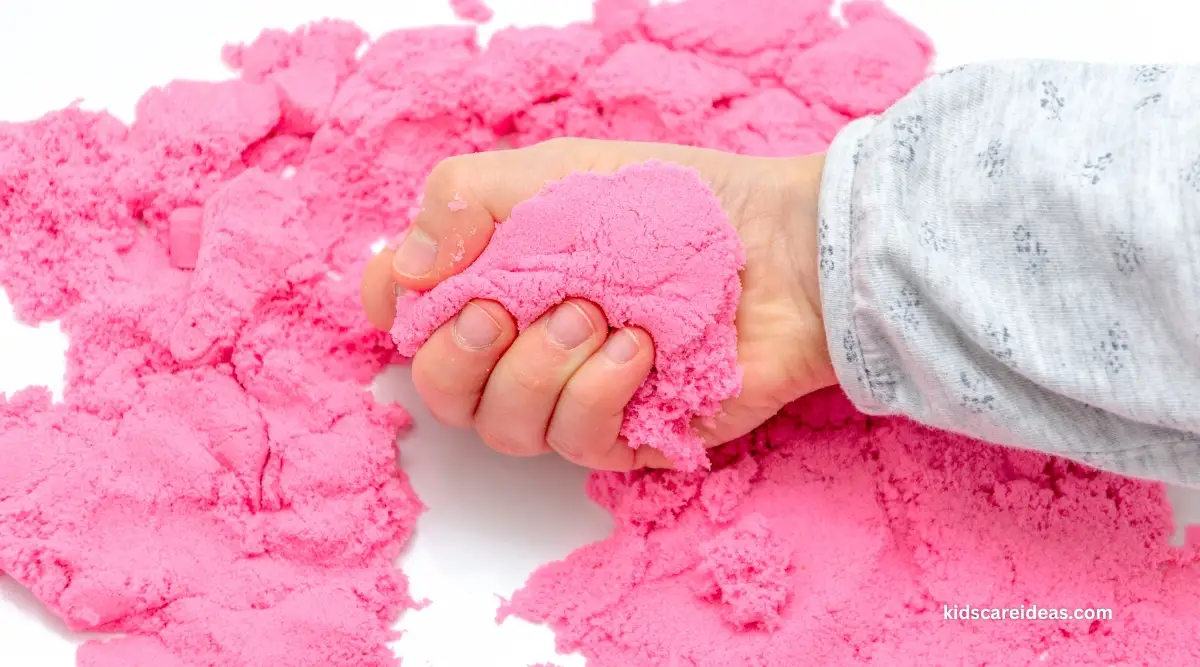Unlike any other regular sand, you may have seen a special type of sand named as Magic sand that does not get wet. Its also a very popular toy among the kids.

Let’s know in detail what it is and the science behind its working!
What is Magic Sand?
Magic sand, also popularly called Hydrophobic sand, is a popular type of toy made of sand and the outer coating of the toy is composed of a hydrophobic substance.
The idea of a hydrophobic substance covering the magic sand is to impart special properties to the toy that make handling and playing much more fun. Kids love to play with this sand.

Magic sand is different from regular sand in terms of chemical composition. It is found in multiple products to make it attractive.
Multiple commercial brands manufacture Magic sand and some also call it by the name Aqua Sand.
How does Magic Sand Work? The Science Behind it
When the toys are exposed to water or any other hydrating substance, the grains of the sand adhere to one another. They form pockets around the sand and at the same time, form a cylindrical shape in itself.

The cylindrical shape is formed to minimize the surface area of the toy. The pocket of air that is formed around the sand cylinder, prevents the sand from getting wet under any circumstance.
Magic or Hydrophobic sand will never get wet under any circumstance because this trapper air layer will always act like a barrier between the sand and any water layer trying to wet it.
The closest variant of this sand is kinetic sand which has certain additional chemical properties to it.
How is Magic Sand different from regular sand?
Magic sand is quite different from regular sand in terms of chemical properties and physicochemical behavior. Magic sand is composed of regular beach sand mixed with Trimethylsilanol((CH3)3SiOH).
Regular beach sand contains traces of minor amounts of pure silica particles. When it is mixed with trimethylsilanol, which is an organic silicon compound, a bond is formed with the resultant formation of water.
Thus, chemically speaking a hydrophobic group coats the exterior of the sand. The layer of the organosilicon particles of Trimethylsilanol or Trimethylhydroxysilane prevents the water from breaking at any point and makes it hydrophobic.
Uses of Magic Sand
Initial Uses of It:
Magic sand was never curated for playing or games. Instead, it was initially manufactured for some commercial process. Trapping any kind of ocean spills near the seashore was the ideal objective of Magic Sand.
Whenever there was any kind of petroleum spill, magic sand was sprinkled near the shore and it would mix with the oil making it heavy would sink. It worked effectively to clean up spills.
Newer Uses of It:
However, later on, due to expense issues, they were no longer used for the purpose. Now it is mostly used for various fun activities like kids’ games.
Sculptures are also crafted out of it. Since they would never be destroyed by water, it is a great material to form sculptures with.
What coating does magic sand have?
Magic sand has a coating of a special chemical substance called Trimethylsilanol. This substance forms a bond with the pure silica particles already present in the regular sand and makes the magic sand hydrophobic so that water does not stick to it at any point.
What happens if you put magic sand in water?
When magic sand is put in water, it does not get wet. Unlike ordinary sand, the magic sand never gets clingy or forms a lump when it is mixed with water. The grains remain free as in dry sand and never stick to one another.
The video below shows how the sand remains dry after picking up from water.
Only if you make the magic sand wet in a vacuum chamber then only it can get wet. Its a fun science experiment that you can try to take the magic out of your magic sand.
Check this video about this experiment.
Is Magic Sand messy?
No. Magic sand is not at all messy. You can shape it as you like, mold it according to your wish, mold or squeeze it and still it will get back to its original form. The sand is never messy to get along with. Kids can easily play with it.
Can you make Magic Sand at home?
Magic sand can be made at home by mixing the regular sand with some waterproofing spray. All you have to do is put some regular sand in a bowl and put some waterproofing chemicals in it and allow it to dry.
